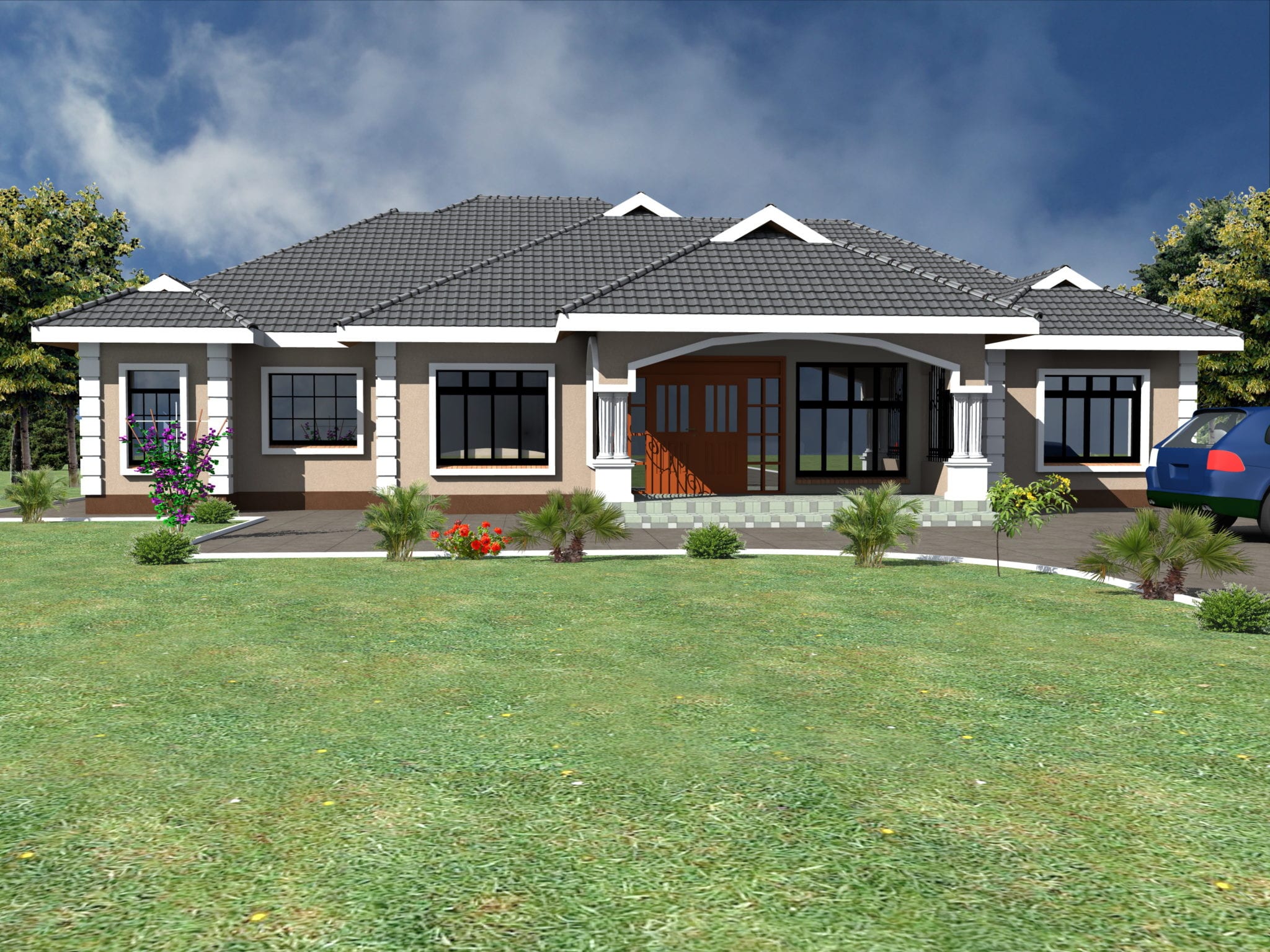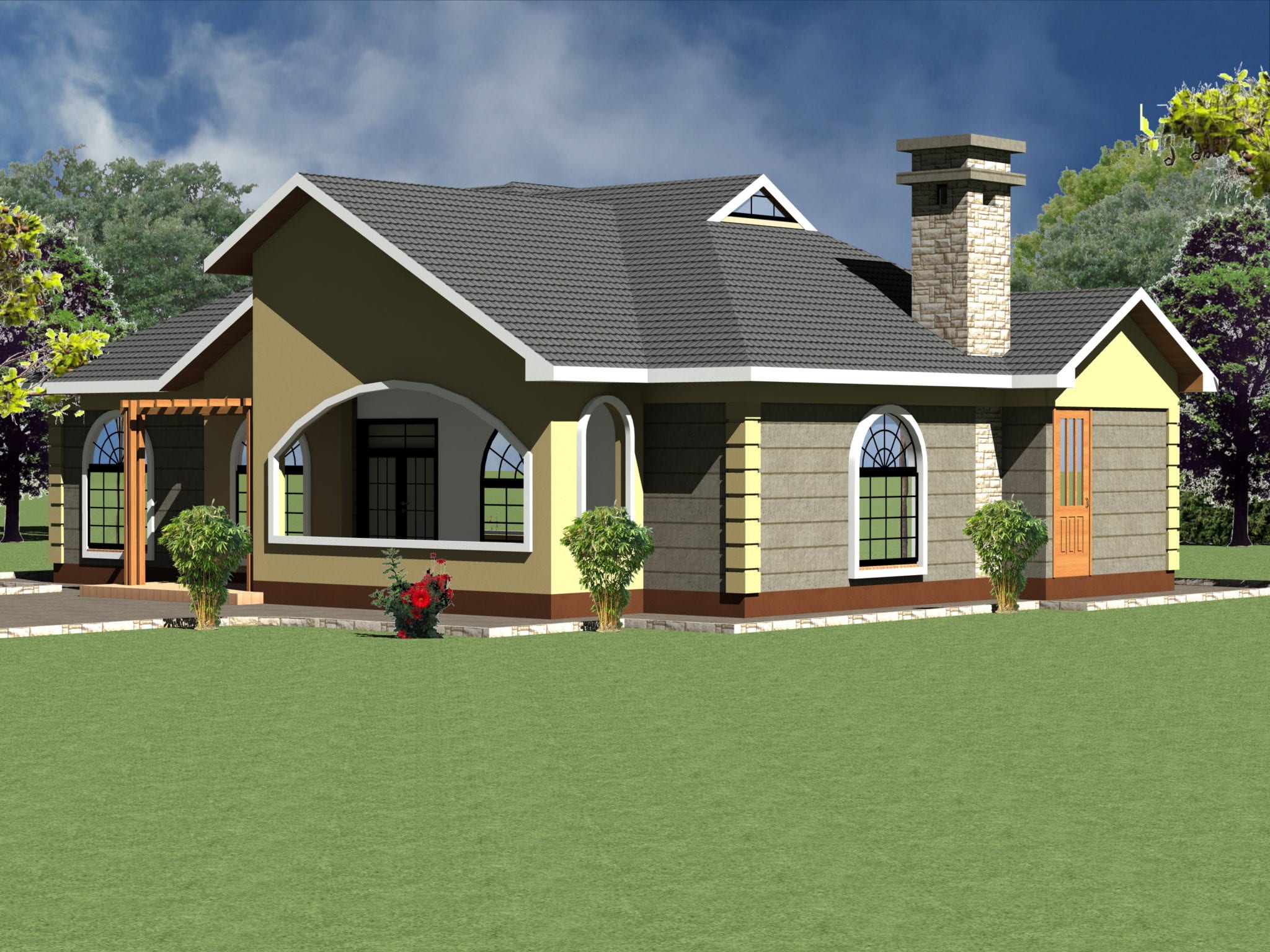Understanding 4-Bedroom House Plans

A 4-bedroom house plan is a blueprint that Artikels the layout and features of a home designed to accommodate a larger family or individuals seeking ample space. These plans offer a variety of configurations, each with its own unique advantages and disadvantages.
Types of 4-Bedroom House Plans
The design of a 4-bedroom house plan can vary significantly, with each type offering a distinct living experience.
- Ranch: This single-story style prioritizes ease of access and convenience, with all living areas situated on one level. This layout is ideal for families with young children or seniors, minimizing the need for stairs. Ranch homes typically feature open floor plans, maximizing space and fostering a sense of openness.
- Two-Story: Two-story homes maximize vertical space, providing a compact footprint while offering ample living area. They often feature a formal living room, dining room, and a kitchen on the first floor, while bedrooms are situated on the upper level. The staircase becomes a central element, connecting the two floors and adding a sense of grandeur.
- Split-Level: This design combines the benefits of both single and two-story homes. It typically features an entry level with a living room, kitchen, and dining area, while bedrooms are located on the upper level and a lower level may house a family room, basement, or garage. Split-level homes offer flexibility and distinct zones for different activities.
Advantages and Disadvantages of 4-Bedroom House Plans
Each type of 4-bedroom house plan presents a unique set of advantages and disadvantages that should be carefully considered when choosing the best fit for your needs.
- Ranch:
- Advantages: Easy accessibility, open floor plan, lower construction costs, less maintenance due to a single level.
- Disadvantages: Limited vertical space, potentially smaller lot requirements, may not be suitable for large families with diverse needs.
- Two-Story:
- Advantages: More living space within a smaller footprint, potential for larger lot sizes, often features a grand staircase, provides privacy for bedrooms.
- Disadvantages: Staircase can be a safety concern for young children and seniors, higher construction costs, may require more maintenance.
- Split-Level:
- Advantages: Offers a combination of single and two-story benefits, distinct zones for different activities, can be more energy efficient than two-story homes.
- Disadvantages: May require a sloped lot, can be more challenging to furnish and decorate, may not be suitable for families with very young children.
Popular 4-Bedroom House Plan Styles, House plans for 4 bedroom house
The architectural style of a 4-bedroom house plan can influence its overall aesthetic and character.
- Contemporary: This style emphasizes clean lines, geometric shapes, and open floor plans. It often features large windows, flat roofs, and a minimalist approach to ornamentation.
- Traditional: This style evokes a sense of classic elegance with its symmetrical facade, intricate details, and use of natural materials. It typically features pitched roofs, columns, and a formal layout.
- Farmhouse: This style embraces a rustic charm with its use of natural materials, exposed beams, and a focus on functionality. It often features a wraparound porch, large windows, and a cozy interior.
Designing Your Dream 4-Bedroom Home: House Plans For 4 Bedroom House

The journey of building a home is an exciting adventure, especially when it involves crafting a space for your family to thrive. Choosing the right 4-bedroom house plan is a crucial step in this process, a decision that shapes the heart and soul of your future home.
This section delves into the art of selecting a 4-bedroom house plan that aligns with your family’s unique needs and aspirations, ensuring a harmonious blend of functionality and aesthetics.
Factors to Consider When Choosing a 4-Bedroom House Plan
Before embarking on the design journey, it’s essential to carefully consider various factors that will influence the final blueprint of your dream home. These considerations serve as guiding principles, ensuring that your chosen plan caters to your family’s specific requirements and lifestyle.
- Lot Size: The dimensions of your property play a significant role in determining the footprint of your house. A larger lot offers more flexibility in terms of house size, landscaping, and outdoor living spaces. Conversely, a smaller lot might necessitate a more compact design to maximize usable space.
- Budget: Establishing a realistic budget is crucial for narrowing down your options. The cost of construction varies depending on the size, materials, and design features of the house. A clear understanding of your financial limitations will help you choose plans that fit within your budget.
- Desired Features: Consider the specific features you envision for your home, such as the number of bathrooms, kitchen layout, and outdoor amenities. These preferences will shape the design and functionality of your house plan.
- Lifestyle: Your family’s lifestyle influences the design choices you make. For instance, a family that enjoys entertaining might prioritize an open floor plan with a large living area. A family with young children might prioritize a dedicated playroom or a spacious backyard.
Flow and Functionality
The heart of a well-designed house plan lies in its flow and functionality. A thoughtfully designed floor plan ensures that spaces seamlessly connect, creating a harmonious and efficient living environment.
“A well-designed floor plan is like a symphony, where every room plays its part in creating a beautiful and functional whole.”
- Traffic Flow: Consider the movement of people within the house. Strategic placement of doorways, hallways, and stairs can minimize congestion and create a sense of ease. For instance, placing the kitchen near the dining room and living area facilitates easy access for meal preparation and entertaining.
- Natural Light: Maximizing natural light is essential for creating a bright and inviting atmosphere. Large windows and skylights can flood the interior with sunlight, enhancing the overall feel of the house. Consider the orientation of your lot and the position of windows to optimize sunlight exposure.
- Privacy: Privacy is paramount, especially in a multi-family home. Consider the placement of bedrooms, bathrooms, and other private spaces to ensure a sense of seclusion and tranquility. For instance, master bedrooms often benefit from a separate wing or a dedicated hallway for added privacy.
Incorporating Design Elements
A 4-bedroom house plan provides a canvas for creativity, allowing you to incorporate design elements that reflect your personal style and enhance the overall aesthetic appeal of your home.
- Open Floor Plans: Open floor plans are becoming increasingly popular, as they create a sense of spaciousness and flow. They often combine the living room, dining room, and kitchen into a single, interconnected area, ideal for entertaining and family gatherings.
- Multi-Purpose Rooms: Incorporating multi-purpose rooms can maximize space and flexibility. A guest room can double as a home office, a playroom can transform into a home theater, and a basement can be utilized for recreation or storage.
- Outdoor Living Spaces: Creating outdoor living spaces extends your living area beyond the confines of the house. Patios, decks, and balconies provide opportunities for relaxation, dining, and entertaining. Consider incorporating elements like fire pits, outdoor kitchens, and landscaping to enhance the ambiance of your outdoor spaces.
Building Your 4-Bedroom House

The journey of building a 4-bedroom house is a complex and exciting undertaking. It involves a series of steps, from choosing a builder to obtaining permits, each requiring careful consideration and planning. This section delves into the intricacies of building your dream 4-bedroom home, guiding you through the process and providing valuable insights to ensure a smooth and successful outcome.
Choosing a Builder
Selecting the right builder is crucial for the success of your project. A reputable builder possesses the experience, expertise, and commitment to deliver a high-quality home that meets your specifications and budget.
- Research and gather recommendations: Start by researching local builders and seeking recommendations from friends, family, or professionals in the construction industry. Look for builders with a proven track record of successful projects, positive client testimonials, and a commitment to quality craftsmanship.
- Review portfolios and references: Request to see portfolios of previous projects and contact past clients to gauge their satisfaction with the builder’s work. This will give you a clear understanding of the builder’s capabilities and attention to detail.
- Obtain multiple quotes and compare: Get detailed quotes from several builders, ensuring that the scope of work is clearly defined and the pricing is transparent. Compare the quotes based on materials, labor costs, and project timelines.
- Evaluate communication and professionalism: Assess the builder’s communication skills, responsiveness, and professionalism throughout the selection process. A good builder will be clear, concise, and readily available to answer your questions and address your concerns.
Obtaining Permits
Before construction can begin, you’ll need to obtain the necessary permits from your local municipality. These permits ensure that your project complies with building codes and safety regulations.
- Identify required permits: Contact your local building department to determine the specific permits needed for your project. Common permits include building permits, electrical permits, plumbing permits, and foundation permits.
- Submit applications and supporting documents: Prepare and submit the required applications, including plans, specifications, and engineering reports. Ensure that all documents are complete and accurate to avoid delays.
- Pay fees and inspections: Pay the necessary fees and schedule inspections as required by the building department. The inspector will verify that the construction meets the approved plans and codes.
Construction Materials and Techniques
The choice of construction materials and techniques significantly impacts the cost, durability, and aesthetic appeal of your home.
- Foundation: The foundation forms the base of your home and supports its structure. Common foundation types include concrete slab foundations, crawl space foundations, and basement foundations. The choice depends on factors such as soil conditions, climate, and budget.
- Framing: The framing provides the structural support for the walls, roof, and floors. Traditional wood framing is still widely used, but other options include steel framing and concrete block construction.
- Exterior Cladding: The exterior cladding protects the home from the elements and adds to its aesthetic appeal. Popular choices include brick, stone, stucco, vinyl siding, and fiber cement siding.
- Roofing: The roof protects the home from rain, snow, and other weather conditions. Common roofing materials include asphalt shingles, metal roofing, and tile roofing.
- Windows and Doors: Windows and doors provide natural light, ventilation, and security. Energy-efficient windows and doors can help reduce energy costs and improve comfort.
Typical Costs of Building a 4-Bedroom House
The cost of building a 4-bedroom house varies significantly depending on factors such as location, size, materials, and finishes.
The average cost of building a 4-bedroom house in the United States is estimated to be between $250,000 and $500,000.
- Land Costs: The cost of land varies greatly depending on location and size.
- Construction Costs: This includes the cost of labor, materials, permits, and inspections.
- Design Fees: If you hire an architect or designer, you’ll need to budget for their fees.
- Contingency Costs: It’s always wise to include a contingency fund to cover unexpected expenses.
Managing the Building Process
Effective communication, careful planning, and proactive management are essential for a successful building project.
- Establish clear communication channels: Maintain open and frequent communication with your builder, architect, and other professionals involved in the project.
- Develop a detailed project schedule: Create a realistic timeline that Artikels the key milestones and deadlines. Regularly review and update the schedule to track progress.
- Monitor progress and budget: Regularly inspect the construction site to ensure that the work is progressing according to plan and budget.
- Address issues promptly: If any problems arise, address them promptly and efficiently to avoid delays and cost overruns.
